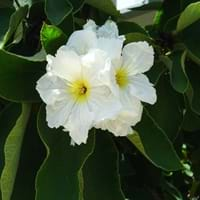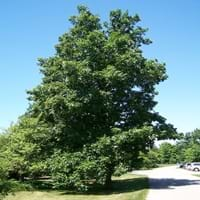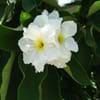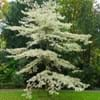Life Span
Perennial
Perennial
Origin
Southwestern United States, Texas, Mexico
Northeastern United States, Mid-Atlantic United States, Southeastern United States, Central United States, Canada
Types
Not Available
Northern shagbark hickory, Southern shagbark hickory
Number of Varieties
Not Available
Habitat
Well Drained
Woodland Garden Canopy
USDA Hardiness Zone
8-11
4-8
Sunset Zone
H1, H2, 8, 9, 10, 11, 12, 13, 14, 15, 16, 17, 18, 19, 20, 21, 22, 23, 24
Not Available
Habit
Oval or Rounded
Oval or Rounded
Flower Color
White, Yellow, Ivory
Not Available
Flower Color Modifier
Bicolor
Bicolor
Fruit Color
Black
Not Available
Leaf Color in Spring
Gray Green, Dark Green
Not Available
Leaf Color in Summer
Gray Green, Dark Green
Not Available
Leaf Color in Fall
Gray Green, Dark Green
Not Available
Leaf Color in Winter
Olive, Gray Green
Not Available
Leaf Shape
Elliptic
Pinnate
Plant Season
Spring, Summer, Fall
Spring, Summer, Fall
Sunlight
Full Sun
Full Sun
Type of Soil
Loam, Sand
Loam, Sand
The pH of Soil
Acidic, Neutral, Alkaline
Acidic, Neutral
Soil Drainage
Well drained
Well drained
Bloom Time
Late Spring, Early Summer, Summer, Late Summer, Fall, Late Fall, Early Winter
Not Available
Tolerances
Drought, Salt, Soil Compaction
Not Available
Where to Plant?
Ground
Ground
How to Plant?
Budding, Seedlings
Seedlings
Plant Maintenance
Medium
Medium
Watering Requirements
Average Water Needs, Do not water frequently, Prefer drip-irrigation instead of Over-head watering
Average Water Needs
In Summer
Lots of watering
Lots of watering
In Spring
Moderate
Moderate
In Winter
Average Water
Average Water
Soil pH
Acidic, Neutral, Alkaline
Acidic, Neutral
Soil Type
Loam, Sand
Loam, Sand
Soil Drainage Capacity
Well drained
Well drained
Sun Exposure
Full Sun
Full Sun
Pruning
Remove damaged leaves, Remove dead branches, Remove dead leaves
Remove damaged leaves, Remove dead branches, Remove dead leaves
Fertilizers
All-Purpose Liquid Fertilizer, Apply N-P-K, Phosphorous
Apply 10-10-10 amount
Pests and Diseases
Pests and diseases free, Red blotch
Leaf spot, Powdery mildew, Trunk Rot, Verticillium Wilt
Plant Tolerance
Drought, Dry Conditions
Drought
Flowers
Showy
Insignificant
Flower Petal Number
Single
Not Available
Foliage Texture
Coarse
Not Available
Foliage Sheen
Matte
Not Available
Attracts
Birds, Hummingbirds, Butterflies
Mice, Red and Gray Squirrels
Allergy
Pollen
breathing problems, Mouth itching, Sore Throat, Swelling, Throat itching
Aesthetic Uses
Borders, Cottage Garden, Used in parkland
Not Used For Aesthetic Purpose
Beauty Benefits
Not Available
Moisturizing
Environmental Uses
Air purification
Air purification
Medicinal Uses
Cough, Rheumatism
Analgesic, Antirheumatic
Part of Plant Used
Flowers, Fruits, Leaves
Sap, Seeds
Other Uses
Used as Ornamental plant
Used as an excellent fuel, Used in pies, cakes, Used to make yellow dye, used to prepare nut milk
Used As Indoor Plant
No
No
Used As Outdoor Plant
Yes
Yes
Garden Design
Feature Plant, Mixed Border, Rock Garden / Wall, Shade Trees, Tropical
Edible, Shade Trees
Botanical Name
CORDIA boissieri
CARYA ovata
Common Name
Anacahuita, Texas Olive
Shagbark Hickory
In Hindi
Anacahuita
Shagbark Hickory
In German
Anacahuita
Shagbark Hickory
In French
anacahuita
Caryer ovale
In Spanish
anacahuita
Shagbark Hickory
In Greek
Anacahuita
Shagbark Hickory
In Portuguese
Anacahuita
Shagbark Hickory
In Polish
Anacahuita
ORZESZNIK PIĘCIOLISTKOWY
In Latin
Anacahuita
Carya
Phylum
Tracheophyta
Magnoliophyta
Class
Magnoliopsida
Magnoliopsida
Order
Boraginales
Juglandales
Family
Boraginaceae
Juglandaceae
Clade
Angiosperms, Asterids, Eudicots
Angiosperms, Eudicots, Rosids
Tribe
Not Available
Juglandeae
Subfamily
Not Available
Juglandoideae
Number of Species
Not Available
Importance of Anacahuita and Shagbark Hickory
Want to have the most appropriate plant for your garden? You might want to know the importance of Anacahuita and Shagbark Hickory. Basically, these two plants vary in many aspects. Compare Anacahuita and Shagbark Hickory as they differ in many characteristics such as their life, care, benefits, facts, etc. Every gardener must at least have the slightest clue about the plants he wants to plant in his garden. Compare their benefits, which differ in many ways like facts and uses. The medicinal use of Anacahuita is Cough and Rheumatism whereas of Shagbark Hickory is Analgesic and Antirheumatic. Anacahuita has beauty benefits as follows: Not Available while Shagbark Hickory has beauty benefits as follows: Not Available.
Compare Facts of Anacahuita vs Shagbark Hickory
How to choose the best garden plant for your garden depending upon its facts? Here garden plant comparison will help you to solve this query. Compare the facts of Anacahuita vs Shagbark Hickory and know which one to choose. As garden plants have benefits and other uses, allergy is also a major drawback of plants for some people. Allergic reactions of Anacahuita are Pollen whereas of Shagbark Hickory have breathing problems, Mouth itching, Sore Throat, Swelling and Throat itching respectively. Having a fruit bearing plant in your garden can be a plus point of your garden. Anacahuita has no showy fruits and Shagbark Hickory has no showy fruits. Also Anacahuita is not flowering and Shagbark Hickory is not flowering . You can compare Anacahuita and Shagbark Hickory facts and facts of other plants too.





